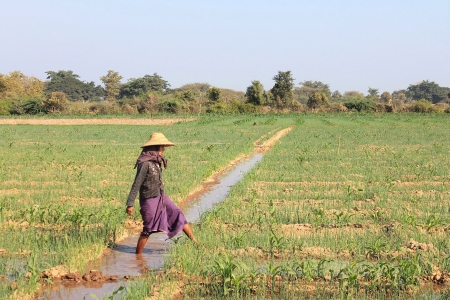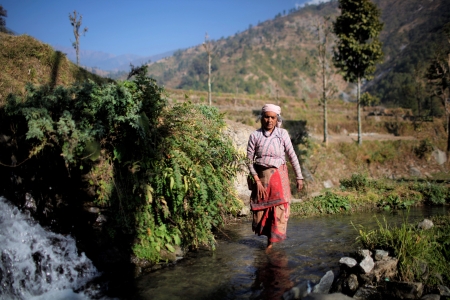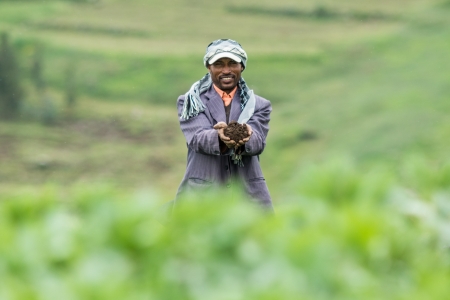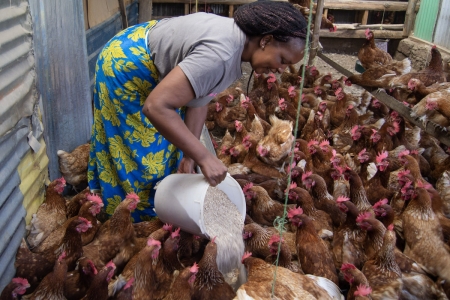Women and girls are often excluded from efforts to restore planetary ecosystems. This despite the huge roles they play in agriculture, food security, nutrition, land management and all other uses of nature. On this year’s International Day of Rural Women, let’s take a closer look at the structural barriers, social norms and historical biases that still hold us back and trip up our attempts to restore the planet.
Today, the decline of nature has reached dangerous levels, with catastrophic consequences in store for people and planet. In response, global agendas and programs are prioritizing ecosystem restoration – this year for example, the UN General Assembly declared the UN Decade on Ecosystem Restoration.
First conceptualized more than 20 years ago, ecosystem restoration has been defined as “the process of assisting the recovery of an ecosystem that has been degraded, damaged or destroyed.” What we often fail to recognize is that this definition implies that people must act. The very women and men who farm the land and live in forests must make deliberate efforts to facilitate recovery of species, ecosystems and landscapes.
This is where it gets complicated. Because, not all people are the same – they rather differ in terms of gender, wealth, ethnicity and more. This means that ecological restoration includes a complex, but crucial, social dimension.
The social dimension
The social dimension is often lacking from definitions of ecosystem restoration, and guidelines for implementing and measuring restoration initiatives are limited by their omission of social factors. More recently, however, attention is shifting toward the historical, cultural and institutional aspects of restoration targets and programs, and consensus is building that restoration requires an explicit inclusion of ‘the human element’.
Payments for ecosystem services (PES) and Reduced Emissions from Deforestation and Forest Degradation (REDD+) schemes are among existing market-based mechanisms heralded for integrating the human dimension into ecological restoration. Both reward communities financially or in-kind in exchange for natural resources being conserved, carbon emissions reduced, or both.
But in recognizing that women and men are the actors – the ones preserving trees, putting up fences – we also discover something else: social and historical factors influence the framing of, and gendered benefits from, PES and REDD+ initiatives.
Women and men use natural resources in different ways to meet their gendered roles and responsibilities, but they do not have the same access to decision making. PES and REDD+ initiatives often overlook this difference, favoring men’s more public, influential decision-making roles.
This is important to recognize because these initiatives place restrictions on resource use that, because of their failure to account for gendered differences, can negatively and disproportionately affect women, especially at the household level. To achieve successful, equitable outcomes from PES and REDD+ we need to ask ourselves if these initiatives are tainted by a historical legacy of overlooking the role of women in natural resource management.
What’s more, because both PES and REDD+ schemes are underpinned by the dynamics of capitalist markets, everyone, women and men, needs to gain more than they lose from supporting a scheme. Otherwise they have no incentive to participate. The current focus on purely financial benefits ignore the wide array of other social benefits that motivate (in)action.
Questions of power and incentive
One approach to broadening understanding of what drives ecosystem restoration is to consider the interaction between formal and informal institutions in the design, implementation and outcome of ecosystem restoration schemes.
Formal institutions, such as new property rights and markets established under PES and REDD+ schemes, are socially constructed and tend to be defined by those with more negotiating power – those with more land for example. Therefore, they are reinforcing a particular social order. Again, asking whether this unequal distribution of land is a result of one group, or gender, currently and historically being favored is a starting point for promoting equity in future restoration programs.
Informal institutions include rules that govern rights to access, own and control resources and can often be defined by gender norms. PES and REDD+ schemes might unintentionally favor men who are considered the main household decision-makers, at the expense of women who manage the same land and also interact with grasslands, rivers, wildlife and trees – but are not the formal landowners. Attention to the intra-household level, especially regarding the distribution of men’s and women’s roles and responsibilities, is therefore also an important focus.
These formal and informal institutions create power imbalances that lead to the uneven distribution of economic and non-economic costs and benefits between women and men. Consequences include pushback and resistance to restoration. If such imbalances are not taken into account, people’s interest in participating in restoration activities is threatened, and the viability of restoration programs is at risk. Therefore, future initiatives need to acknowledge and challenge the power imbalances that hamper their chances of success.
The road ahead
Restoring ecosystems is necessary to rehabilitate biodiversity-rich habitats and safeguard agricultural livelihoods. But success hinges on embracing the inherent social dimension – including the differences between women and men.
Looking at today’s degradation through a social lens can help explain why biodiversity is declining and ecosystems deteriorating. More importantly, adopting this social perspective in the design of future restoration initiatives can help ensure that women and men, rich and poor, old and young, can all participate in and benefit from them.
This is important not only because it’s morally and ethically right, but because it increases our chances of designing effective restoration programs and achieving a healthy, thriving planet.
This blog was made possible partially through a ThriveNet researcher travel grant.
Thrive blog is a space for independent thought and aims to stimulate discussion among sustainable agriculture researchers and the public. Blogs are facilitated by the CGIAR Research Program on Water, Land and Ecosystems (WLE) but reflect the opinions and information of the authors only and not necessarily those of WLE and its donors or partners. WLE and partners are supported by CGIAR Trust Fund Contributors, including ACIAR, DFID, DGIS, SDC, and others.






%5b2%5d/index.jpg?itok=cmTC-WgA&c=feafd7f5ab7d60c363652d23929d0aee)













